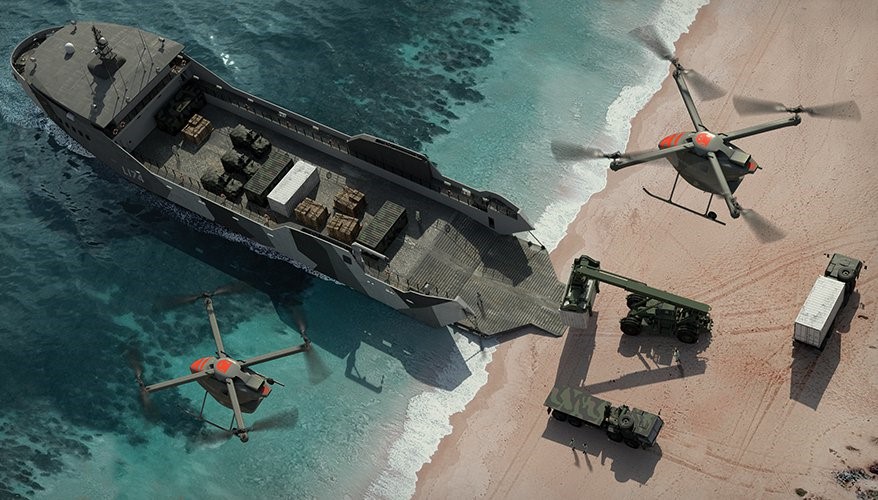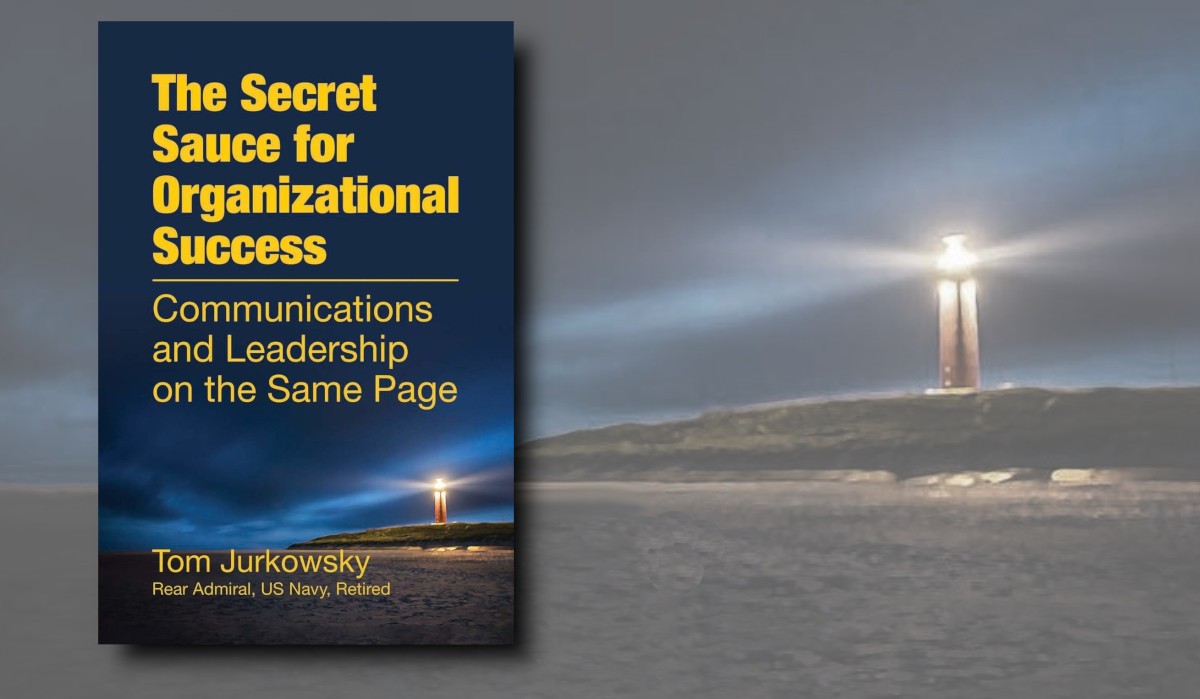Lessons for Littoral Logistics
Introduction
Australia’s Littoral Manoeuvre Group (LitManGp) marks a step-change in how the Army projects and sustains land power across the Indo-Pacific. Built from the outset to deal with contested littorals, its design and employment should be anchored on four principles: movement, self-protection, deception, and persistence. Movement ensures we can reach, bypass and sustain forces across archipelagic terrain. Self-protection(organic weapons, sensors and C-UAS, underpinned by clear doctrine) keeps logistics alive without stripping combat power for escort. Deception (signature management, EMCON, decoys and terrain use) limits the enemy’s ability to detect, target and predict us. Persistence (through modular sustainment, manned–uncrewed teaming, resilient comms and a scalable workforce of regular, reserve and contracted personnel) keeps the lift running under pressure. From Oboe in 1945 to Ukraine and non-state actors today, the lesson is constant: logistics cannot assume sanctuary. When these four principles are designed-in, logistics stops being a liability and becomes a source of operational tempo.
1. Historical Lessons Revisited
The history of Australia’s amphibious and riverine operations offers enduring insights into the necessity for self-reliant and protected logistics. During the Oboe operations of 1945, Australian forces conducted the nation’s largest amphibious campaign, involving landings at Tarakan, Labuan, and Balikpapan.[i] These operations were not merely logistical achievements; they were contests of initiative and adaptation, where the ability to sustain forward momentum depended on the capacity to operate independently along contested coastlines and river networks.[ii] In this regard, the Battle of Beaufort remains particularly instructive. Australian forces used the Padas River to bypass Japanese defensive lines, deploying troops and supplies upriver to outflank enemy positions.[iii] This action demonstrated the value of inland waterways but also exposed a broader vulnerability: the absence of organic protection for the very assets enabling manoeuvre[ii].
Parallel lessons emerged from Operation Semut, where Australian Special Forces worked alongside indigenous resistance fighters. This campaign in river systems again provided flexibility, but it did so only through the employment of stealth tactics, signature reduction, and terrain adaptation.[iv] These operations are a warning: in the littoral, logistics cannot assume sanctuary. During Oboe, gunboats were used extensively, especially around Beaufort to keep supply lines clear and avoid ambush.[ii]
2. The Contemporary Threat to Littoral Logistics
Modern conflict has erased the boundary between front and rear. In Ukraine, Russian forces have routinely targeted rear-area logistics knowing that disruption at the tail affects mass at the front. Ukrainian supply routes along the Dnipro River have been subject to loitering munitions, drone strikes, and long-range fires[iv].
Australia’s own northern approaches mirror these contested spaces. While the 2024 National Defence Strategy and Integrated Investment Program calls for enhanced littoral logistics, without self-protection, Army logistics assets invite interdiction.[v] Littoral transport capabilities with organic protection will not need to be allocated combat forces to achieve escort and protection. This situation will allow for the generation of mass and tempo at the decisive point.
Designing protected logistic elements ensures that forward units can be sustained without diverting assets from the fight. In this context, survivability is not a defensive feature, it is an enabler of offensive tempo. Between 22–28 July 1945, riverine lifts moved 3,004 passengers and 1,768 tons; protected, they drove offensive tempo—unprotected, their loss would have stalled the advance[ii].
3. Lessons from Ukraine – Low-Cost Innovation and Protection
Ukraine has demonstrated that protection does not require expense, only intent and ingenuity. Lightly armed ferries, uncrewed surface vessels, and repurposed civilian craft have all been employed to supply troops under fire, often with improvised armour, local camouflage, and organic sensors[vi]. These craft blur the line between supply and skirmish.
Australia can adopt similar scalable logic. Protected and armed support craft (manned platforms under LAND 8710) can be crewed by members of the regular Army, reservists, or contracted operators. These same crews can expand flotillas by integrating low-cost uncrewed or auxiliary craft, within the same C2 architecture. If these principles are incorporated into the procurement of the system itself, it will be brought into service capable of immediately implementing the best practices from modern military conflict.
Critically, this is not just a procurement issue, it is a mindset shift. Logistics soldiers must be trained and empowered to act as combat logisticians. Platforms must be designed to sense, communicate, manoeuvre and, if required, shoot. Communications systems, such as Ukraine’s use of Starlink[vii], must enable decentralised operation under degraded conditions. If every logistics platform can shoot, sense, and self-organise, then it ceases to be a vulnerability and becomes a force multiplier.[vi] [vii] [viii]
4. Learning from Smugglers and Non-State Actors
Groups such as Abu Sayyaf in the Sulu Archipelago, criminal syndicates in the Straits of Melaka, and illegal fishing fleets in the Gulf of Papua have demonstrated enduring survivability through decentralisation, camouflage, and dispersion[ix] [x] [xi]. Studying the tactics of these groups—from their smart use of terrain, their use of agile shallow-draft boats, local guides, decoys, and their unregistered patterns of movement—will increase the tactical prowess of future littoral commanders.
These unconventional tactics offer a practical counterpoint to exquisite, high-technology methods of employing movement (route selection), self-protection, deception (signature management) and persistence (sustainability—live to fight another day). For Australia’s LitManGp, this means cultivating a persistent, non-provocative presence. Routine logistics tasks, especially in stabilisation or pre-crisis contexts, can build ‘pattern of life’ legitimacy, deterring escalation through familiarity.
Ultimately, the Australian Army doesn’t need to become like non-state actors, but it must adopt their survivability mindset, especially where the operating environment makes conventional advantage uncertain.
5. The Human factor
To achieve the advantage born of familiarity, the crews of the LitManGp must possess regional stakeholder awareness—understanding coastal communities, transit patterns, and operational sensitivities. Concurrently, the use of reserve or contracted operators provides not only workforce flexibility, but also represents a strategic reservoir for national mobilisation.[vi] It enables Army to commit to relationship building (less affected by posting cycles) with the associated benefit of rapid expansion of the permanent force in times of need without degrading core force structure through maintaining unsustainable mass. This opportunity must be considered as platforms alone do not become a capability without a trained and experienced workforce.
Persistent operations carry human risk: isolation, fatigue and command diffusion.[xii] These risks can be mitigated through forward basing, rotational crewing, reach-back medical and command support, and short, high-impact deployments. Rather than further stretching the regular force, the Australian Army could adopt regional models that train reservists drawn from skilled civilian trades (Malaysia’s Territorial Army within the railway repair role for HADR is a useful precedent) enhancing resilience and efficiency.
6. Designing the Protected Littoral Lift Group
LitManGp is a critical enabler of land power projection. The selected Littoral Lift Group (LitManGp) platforms[xiii] are highly capable and well suited to a modernising Army. To ensure their enduring relevance, future iterations should embed organic protection, modularity and doctrinal clarity. Modularity must allow protection to scale—incorporating weapon mounts, passive sensors and C-UAS systems that logistics crews can operate—while open interfaces support rapid role changes. LitManGp craft should also enable controlled integration of uncrewed systems, with manned logistics boats acting as motherships and forming the backbone of local communications and ISR. Done well, this architecture converts lift into protected manoeuvre and provides Government with a scalable option across the competition–crisis–conflict spectrum.
Aligned with the National Defence Strategy,[v] force education and capability development should prioritise speed, interoperability and sustainability. Where feasible, modular kits should be drawn from in-service naval inventories to accelerate integration and avoid the delays of ‘marinising’ bespoke Army solutions. A blended workforce of regular, reserve and contracted operators can sustain persistent presence—particularly in steady-state or grey-zone deployments where over-militarisation may be counter-productive. Training must routinely stress logistics troops under EMCON, drone threat and ISR denial so that, when contested, the LitManGp continues to function as an asset rather than become the mission’s vulnerability.
Conclusion
Australia’s amphibious logistics must do more than move: they must move, survive, confuse, and endure. Movement gives commanders options to outflank and sustain at range; self-protection preserves combat mass by ensuring the lift defends itself; deception keeps logistics unpredictable and hard to target; persistence maintains output despite attrition, weather, distance and time. Embedding these principles in LitManGp platforms and workforce models converts lift into protected manoeuvre and credible deterrence. In a region shaped by grey-zone competition and long-range fires, securing the rear through movement, self-protection, deception and persistence is what ultimately empowers the front.
Endnotes
[i] Australian Army Research Centre. (2023). What can the Australian Army learn from the 1945 Borneo Oboe operations? https://researchcentre.army.gov.au
[ii] McCarthy, D. (2022). The Oboe Landings : 1945 (Australian Army history series; No. 32). Australian Army History Unit.
[iii] Long, G. (1963). The Final Campaigns (Australia in the War of 1939–1945, Series 1: Army, Volume VII). Australian War Memorial.
[iv] Helliwell, C. (2021). Semut: The untold story of a secret Australian operation in WWII Borneo. Michael Joseph/Penguin Random House Australia
[v] Department of Defence. (2024, April 17). 2024 National Defence Strategy (NDS) and 2024 Integrated Investment Program (IIP). Australian Government. Retrieved August 29, 2025, from https://www.defence.gov.au/about/strategic-planning/2024-national-defence-strategy-2024-integrated-investment-program
[vi] Watling, J., & Horne, S. (2024). Assuring Tactical Sustainment of land forces on the modern Battlefield. Royal United Services Institute. https://rusi.org
[vii] Hunder, M. (2025, August 27). Ukraine confident Poland will keep funding Starlink at the front. Reuters. https://www.reuters.com/business/media-telecom/ukraine-confident-poland-will-keep-funding-starlink-front-2025-08-27/
[viii] Ryan, M. (2024, August 8). Analysis: The Battle of Kursk 2024. Lowy Institute. https://www.lowyinstitute.org/publications/analysis-battle-kursk-2024
[ix] Banlaoi, R. (2020). The Sources of the Abu Sayyaf’s Resilience in the Southern Philippines. https://ctc.westpoint.edu/the-sources-of-the-abu-sayyafs-resilience-in-…
[x] Hays, J. (2014). Pirates and Piracy in Asia: Tactics, Targets and Terrorism. https://factsanddetails.com/asian/cat63/sub412/item2593.html
[xi] Australian Strategic Policy Institute (ASPI). (2023). Reeling in illegal fishing is crucial to Australia’s maritime security. https://www.aspi.org.au/strategist-posts/reeling-in-illegal-fishing-is-crucial-to-australias-maritime-security/
[xii] Afghanistan Inquiry Implementation Oversight Panel. (2023, November 8). Afghanistan Inquiry Implementation Oversight Panel: Final report to the Deputy Prime Minister and Minister for Defence. Department of Defence. https://www.defence.gov.au/sites/default/files/2024-05/Afghanistan-Inqu…
[xiii] Shephard Media. (2024). Australia pushes ahead on reinstating heavy landing capability with selection of Damen. Shephard Media. https://www.shephardmedia.com/news/naval-warfare/australia-pushes-ahead-on-reinstating-heavy-landing-capability-with-selection-of-damen/



